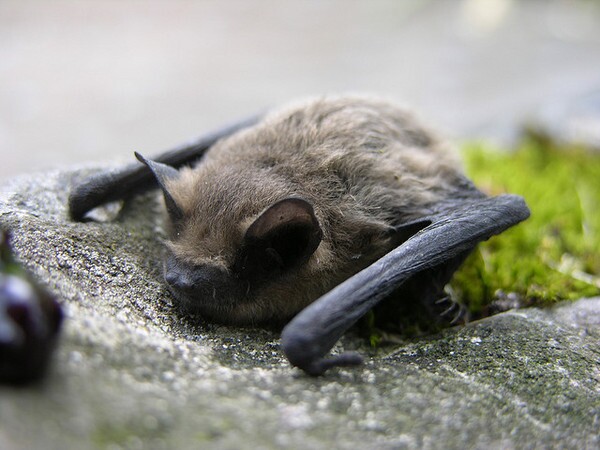UK Ecologist: 'Wind Farms Driving Birds, Bats to Extinction'

This Scottish bat is threatened by wind energy development, says an Oxford biologist. | Photo: Lee Carson/Flickr/Creative Commons License
This hasn't been a great month so far for wind turbine fans in the United Kingdom. First, a report released just before New Years found that many wind turbines' effective lifespans are much shorter than expected. And this week, a respected British ecologist is slamming the wind industry, saying that wind power is "devastating populations of rare birds and bats across the world, driving some to the point of extinction."
In an essay that's getting some serious traction in environmentalist circles, Clive Hambler -- a lecturer at Oxford, and author of the Cambridge University Press text "Conservation" -- slams the wind industry in no uncertain terms, saying that the sector's support from environmentalists comes as a result of environmentalists being essentially ignorant of science:
The environmentalists who support such projects do so for ideological reasons. What few of them have in their heads, though, is the consolation of science.
Hambler cites some distressing statistics from sources around the world. Between 6-18 million birds and bats are killed by Spanish wind farms each year Hambler says, including 400 griffon vultures per year just at Navarro. German wind turbines kill at least 200,000 bats per year, depressing populations up to 2,000 miles away. Wind turbines in the U.S. have been estimated to kill 70 bats per installed megawatt per year, on average, says Hambler. That would work out to about 320,000 bats per year in California.
Hambler's assessment of the reasons for wind power's popularity among environmentalists is rather unsparing:
Why is the public not more aware of this carnage? First, because the wind industry (with the shameful complicity of some ornithological organisations) has gone to great trouble to cover it up -- to the extent of burying the corpses of victims. Second, because the ongoing obsession with climate change means that many environmentalists are turning a blind eye to the ecological costs of renewable energy. What they clearly don't appreciate -- for they know next to nothing about biology -- is that most of the species they claim are threatened by 'climate change' have already survived 10 to 20 ice ages, and sea-level rises far more dramatic than any we have experienced in recent millennia or expect in the next few centuries. Climate change won't drive those species to extinction; well-meaning environmentalists might.
Hambler's essay appeared in the British paper The Spectator in a week in which the wind industry was still reeling from a study conducted for the UK's Renewable Energy Foundation that suggests wind turbines in the UK and Denmark have a much shorter productive lifespan that expected. According to the study, which was conducted by researchers at Edinburgh University, many turbines have declined to around 70 percent of their rated output by the time they reach 10 years of service.
Though that study was characterized as misleading by wind energy advocates, it too has gotten some traction, and its defenders are citing California as a cautionary example -- though not without engaging in hyperbole. Murdo Fraser, a Conservative Member of the Parliament of Scotland, described California's desert as a sort of elephants' graveyard of wind turbines in a statement to the Scots newspaper the Courier:
"We already know that the average wind turbine must be in operation for a minimum of two years to pay back the carbon cost of construction," he said. "If the average lifespan of a wind turbine is only 10 years then the Scottish Government must seriously question wind energy's role in displacing carbon emissions. "However, the rapid wear and tear of wind turbines comes as no surprise. We need only cast our eye across the Atlantic to see 12,000 turbines rotting in the Californian desert.
California does have quite a few obsolete wind turbines, and not just in the desert, but their total is probably closer to 3,000 or 4,000.
ReWire is dedicated to covering renewable energy in California. Keep in touch by liking us on Facebook, and help shape our editorial direction by taking this quick survey here.


